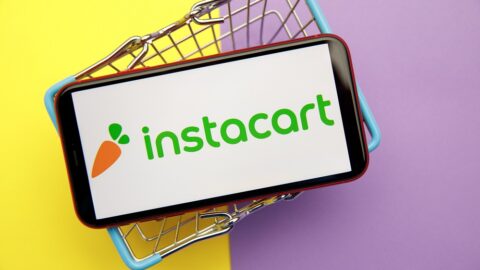Direct-to-consumer (DTC) brands have a unique advantage in that they own the entire customer experience — and perhaps most important, all the data that is generated along with it. Many of these businesses, especially those born over the past decade, also are digital natives, which means they have the innate agility and savviness that legacy retailers are trying to adopt.
But as many DTC darlings have gone public over the past year, the curtain has been pulled back and we’ve been able to see the unique challenges they’ve faced — and the possible pitfalls of the business model. For example, while Warby Parker announced a year-over-year revenue increase of 32% in its Q3 2021 earnings, the brand also reported an operating loss of $92 million for the quarter, more than double its $41.3 million loss in Q3 2020. Although these losses are largely tied to extremely aggressive expansion plans, they also point to universal problems DTC brands face, such as navigating the rising costs of online customer acquisition.
“Acquisition for DTC can be expensive depending on the product category, so more than ever brands should use owned channels like email and SMS, especially with Apple’s iOS 15 release in the fall,” said Courtney Hedges, AVP of Digital Marketing for LiveArea, a global customer experience and commerce agency. To address these “CAC problems,” Hedges noted that DTC brands need to own the customer experience and use the data they collect to drive personalized experiences.
DTC brands such as Fernish, Model No. and Gemist are attempting to do just that. In order to bypass growth challenges, they are evolving their approach to customer engagement and experience to include new channels and tactics. Experts like Rose Hamilton, Founder and CEO of Compass Rose Consulting, which specializes in DTC brand development and business strategy, believe that for DTC players to thrive in this new era of retail, they will need to start designing a growth playbook built around a holistic brand community that encompasses many channels.
Brands following the old playbook “paid a lot of attention to the paid facets, but not the community,” said Hamilton. “But now, we’re in the Community Economy.”
Assembling the DTC Flywheel
If DTCs want to scale and develop a sustainable strategy for organic growth, their communities need to be integral to everything they do. “The one thing that’s not changing is that DTCs will need to be able to look at CPA ratio against lifetime value,” Hamilton explained. “The challenge will always be keeping CPA at a reasonable level and having enough of an eye toward retention. That’s where the flywheel comes in.”
The DTC flywheel is designed to help brands effectively attract, engage, delight and retain customers across all channels. Brands must start with a core value proposition, a unique benefit they’re bringing to the market and specifically to their niche audience. This value proposition should go beyond the product itself and include everything from branded content to the shopping experience to community engagement.
“It’s about reducing hurdles for the customer and knowing what they really need,” Hamilton noted. “Then you need to constantly iterate that flywheel over time so that CPA goes down and lifetime value goes up.”
“Our ability to communicate the benefits of our service, our business model and the ways that we differentiate ourselves has really improved over the last year. With no one-size-fits-all, it can be challenging to make your brand resonate with customers, but we’ve been continually coming back to our mission — to make it effortless to create your home — and leveraging not only our amazing products and service but the impact we can make in your life.”
– Kristin Toth Smith, President and COO, Fernish
RECOMMENDED LISTENING:
Riding the Social Commerce Wave
In the Direct-to-Community era, content is core in the DTC flywheel, especially as social commerce continues to mature.
“The new DTC model is the Community Economy plus Content-Driven Commerce,” Hamilton said. “You may know how to do paid advertising, for example, but if you don’t have authentic, user-generated customer content selling for you, if you’re not driving referrals, you’re not driving that repeat business and you’re not making that flywheel move.”
Historically, many defined social commerce as any sale influenced by social channels. Now, platforms including Instagram, TikTok, Facebook and Pinterest have grown so sophisticated that social commerce is being defined solely as transactions that are completed within these networks.
“While social commerce has in past years been significant primarily in China, we expect it to rapidly grow across the world in coming years,” said Hamza Khan, Partner at McKinsey & Company in an interview with Retail TouchPoints. “The underlying trends all point in this general direction. The big tech players are increasingly incorporating social shopping features to drive the next wave of revenue growth, and we’re seeing social commerce itself evolve to address consumer needs in different markets, from live shopping to conversational commerce.”
Hamilton believes that social platforms will evolve to the point where many DTC players, especially smaller niche brands, won’t even launch their own ecommerce sites. Instead, they will focus on scaling social commerce.
“Gone are the days where you have one website that you have to transact on,” said Hamilton. “Now you have millions of digital storefronts that have ecommerce engines attached to them. You can consume a video on social media, or ask your favorite influencer a question live, and be able to press a button to buy it instantly.”
As the social commerce landscape continues to evolve, Hamilton encourages testing and learning about different platforms and tactics. At a foundational level, brands should test the platforms that their target consumers are gravitating to most frequently. Then they can investigate partnering with experts and influencers that have highly engaged communities. These micro- and nano-influencers have a lot of clout, are more accessible and can be more cost-effective than other options. Additionally, they can help brands co-create a lot of content for multiple campaigns and channels.
“We use a holistic marketing approach that hits all the bells and whistles to target our consumers. The key for us is meaningful content, storytelling and partnerships across all channels. That means speaking to our consumers the right way, meeting them where they are. For us, that’s been our best way to retain consumers. We have intent and put meaning behind all our marketing decisions.”
– Madeline Fraser, Founder and CEO, Gemist
Driving Acquisition and Scale with Marketplaces
Marketplaces are ripe with opportunity, especially for budding brands. Globally, this industry is projected to reach $5 trillion in sales by 2025 as players large and small get their footing.
For some DTCs, marketplaces are a viable starting point for their business. If they have one or just a few products, marketplaces like Walmart’s and Amazon’s help drive customer acquisition and set a path for scale. Niche marketplaces are especially beneficial if a DTC’s products are designed for a very specific audience, lifestyle or pain point. Determining which route to take requires DTCs to first do fundamental brand and product positioning work, according to Hamilton.
“Before people even figure out where they should be located, they need to build that strong foundation and find groups of people to get a sense of where their core audience is and what they need,” she explained. “That premium brand doesn’t want to be in Walmart — and they probably don’t want to be on eBay either.”
While it may be tempting to “land and expand” across all marketplaces, “the downside of racing down that path is you’re giving up that customer relationship and don’t have the opportunity to build out your core email and text lists, which are so important [for growth],” noted Hamilton.
RECOMMENDED LISTENING:
Brick-and-Mortar: Find a Partner or Go it Alone?
Brick-and-mortar took its lumps in 2020, but 2021 proved that the store is still crucial for bringing the brand experience alive. As of December 2021, U.S. store closures have dropped 39% year-over-year, according to Coresight. Additionally, many fast-growing DTC brands have indicated that brick-and-mortar will be a big strategic focus through 2022.
For example, Warby Parker has approximately 150 stores in the U.S. and plans to open 35 new stores by the end of 2021. Model No., the DTC furniture brand, recently opened its Berkeley Showroom to offer design consultations and allow consumers to see its sustainable furniture in person, and CEO Phillip Raub noted that more are on the way. After closing stores and pausing expansion plans during COVID-19 lockdowns, athleisure brand Vuori reactivated and accelerated its physical expansion after seeing a boomerang effect of consumer interest in a physical, community-focused experience.
LEARN MORE:
There’s no one right way to break into brick-and-mortar. Some DTCs are prioritizing their own branded storefronts, while others are testing markets via pop-ups and seasonal activations with retail partners. Others, however, are sticking with traditional wholesale retail partnerships.
To determine the right approach, brands need to consider the context of their entire “channel strategy,” which should cut across both marketing and sales. “While many DTC brands have successfully scaled without partnerships, or have explored them only at later stages, some have opted for retail partnerships from the start for the reach they provide,” said Khan. “It’s not a straightforward yes or no; it depends on the brand, what stage of maturity it is in, and what its overall channel strategy is.”
“We’re prioritizing physical retail over the next year. We sell furnishings and have a lot of high-ticket items on our site. With any expanded line of products launching in Q3 and Q4, physical retail will be critical to our customer acquisition and retention strategy.”
– Phillip Raub, CEO, Model No.
Setting a Path for DTC Success: 5 Questions to Answer
While there are more opportunities than ever for brands to drive growth in the omnichannel era, experts and practitioners have distilled five fundamental questions to guide decisions and tactics:
- Who is your target audience? What are their beliefs, lifestyles and preferences? What adjacent brands and retailers do they buy from?
- What are their challenges and pain points? What information or solutions are they looking for? What value can your brand uniquely provide to help them address their needs?
- Where do they hang out? Which digital channels, platforms and communities do they gravitate to? What physical (or hybrid) communities do they feel a part of?
- What content are they looking for? What information and resources do they consume? What formats are they more likely to want, like and share? What expertise can you provide and distill into content?
- Who do they seek guidance from? Which experts and influencers do they rely on? What other third-party sources and platforms can be tapped for content co-creation and amplification? What role do stores play in this process?
“It all comes back to customer intimacy,” said Hamilton. “Your actions should depend on where your consumers are hanging out — whether it’s media channels, online or offline media, marketplaces or others. Having a handle on where your community is most rich is key.”













